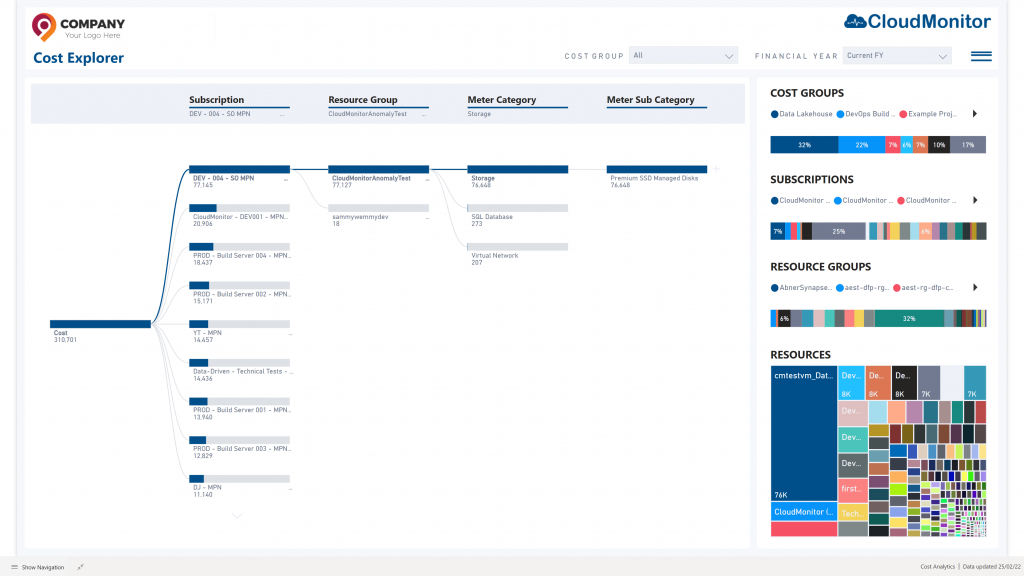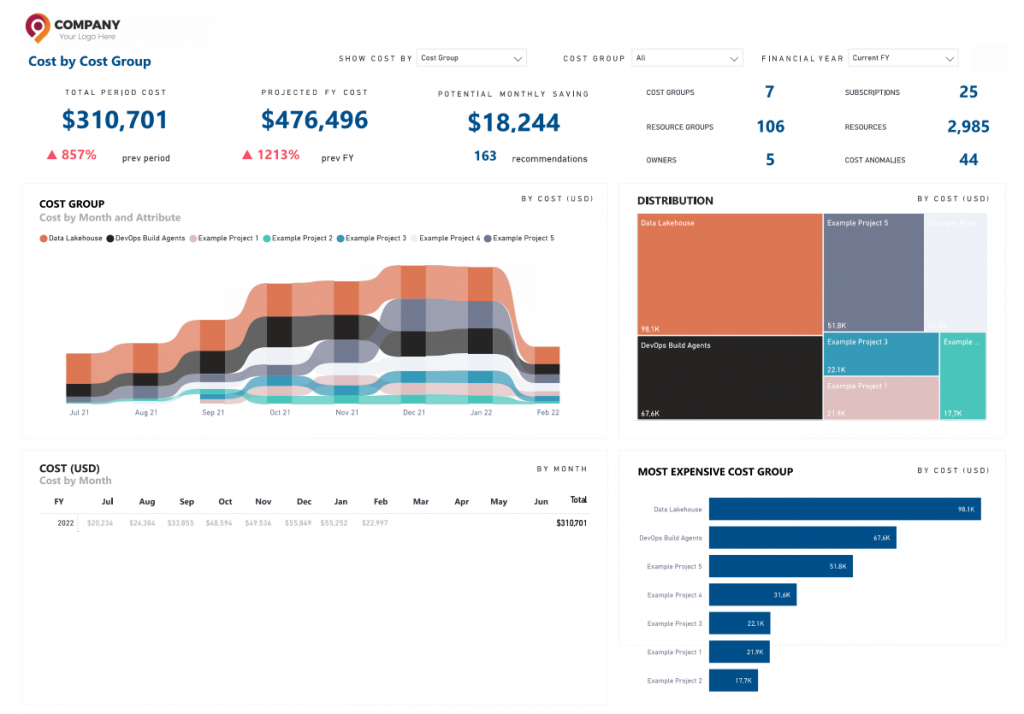Unit Economics Capability
Focuses on creating metrics that show how cloud spend contributes to the business's value. By determining the cloud spend as a percentage of total revenue, you can correlate the growth in cloud spending to business growth.
If the two are in sync, it indicates that cloud spend is being utilized effectively. However, if cloud spend is growing faster than the business, it may raise concerns. For example, in the case of a customer-facing application, this metric may help to evaluate the profitability of that unit.
Practitioners often measure unit costs in the context of Cloud Unit Economics. This is a way to maximize profit by objectively measuring an organization’s performance, not just in FinOps but as a whole. Cloud Unit Economics uses metrics like marginal cost and revenue specific to cloud-based software development and delivery to achieve these goals.
CloudMonitor features related to Unit Economics

Cost by any Metric
The Cost by X tool allows you to analyze your cloud costs across different dimensions. You can select the dimension you want to analyze, and CloudMonitor will generate a chart or table that shows the breakdown of your costs by that dimension.
Cost Explorer


Cost by Cost Group
The Cost by Cost Group tool provides and overview of the costs incurred by different cost groups. This will provide you with better visibility and identify areas where costs can be optimized.
Month on Month Variance
Month-on-Month Variance report is a powerful tool for measuring unit costs in your cloud ecosystem. With the ability to break down monthly costs by business units, subscriptions, and other key metrics, this feature ensures that you have the granular data needed to make strategic decisions for optimizing cloud expenditure and driving business growth.


Costs by Tag
Using tags offers a granular level of detail that allows you to closely examine individual cost elements. This high degree of specificity not only helps you understand the variables impacting your current spending but also provides the insights needed to optimize cloud expenditure in line with business objectives.
Unit Economics Definition
Unit economics is like a detailed scorecard that measures whether the money you’re spending on cloud services is delivering real value. It’s a crucial tool, especially when you think about cloud computing, which can be a big part of your company’s operations. Essentially, it helps you understand if your investment is paying off by tying costs directly to outcomes.
For example, with unit economics, a company can track various metrics, such as the cost associated with each user, each transaction, or even each click on a website. This kind of tracking allows you to see exactly where your money is going and what you’re getting in return. It’s about making sure that every dollar spent on the cloud is contributing positively to your business.
Let’s break it down a bit more. Suppose your business provides online services, and you use cloud computing to power these services. By using unit economics, you could determine the cost of cloud services per million users, per transaction, or per any other measure relevant to your service. This data is invaluable because it shows whether certain aspects of your service are financially viable or need adjustment.
Furthermore, unit economics aren’t just for the finance team. They’re crucial for engineers and product managers as well. Engineers might use these metrics to identify and eliminate inefficiencies in the system, like reducing the cost of running background processes that don’t contribute much to user experience. For product managers, understanding the direct and indirect costs incurred by user activities can lead to better pricing strategies and more informed product development decisions.
This kind of economic analysis is key to fostering a culture of cost-awareness and efficiency within the company. By regularly examining these unit costs, a company can make strategic decisions about where to invest and where to cut back. This might mean deciding to enhance certain features that are proving profitable or to phase out services that are not meeting cost-benefit expectations.
Unit economics also helps in strategic planning and guiding leadership decisions. If unit costs reveal that certain cloud services are underutilized or too expensive, it could lead to significant changes in how resources are allocated. Moreover, understanding unit economics can help in predicting whether increases in cloud costs are justified by the additional business value they bring, which is crucial for scaling operations effectively.
In essence, unit economics provides a framework for making data-driven decisions that align technology spending with business outcomes. It supports a shift in organizational culture where everyone, from engineers to executives, becomes more accountable for how their actions affect the company’s financial health. This approach not only improves efficiency but also drives better business strategies and stronger financial performance.
